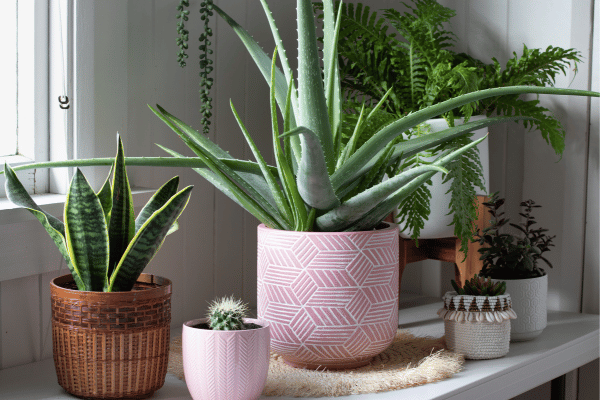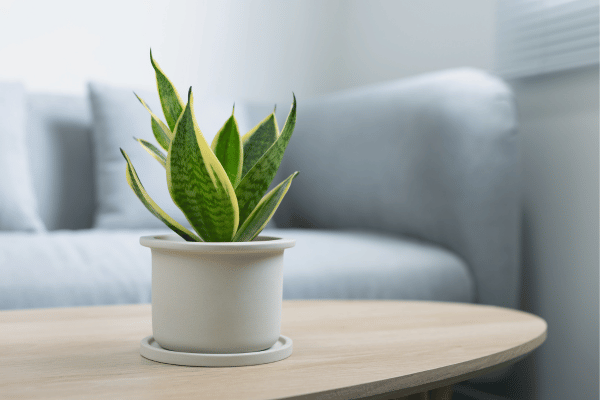Indoor oxygen Plants – By Malsha – eLanka

- Indoor Air Quality: Indoor air quality can be compromised by pollutants such as formaldehyde, benzene, trichloroethylene, and other volatile organic compounds (VOCs). These pollutants can be released by common household items, furnishings, and building materials, leading to poor air quality.
- Indoor Plants and Air Purification: Certain indoor plants have been studied for their ability to purify the air by removing these harmful pollutants. They can absorb these chemicals through their leaves and root systems and convert them into harmless byproducts.
- Oxygen Production: All plants engage in photosynthesis, a process by which they use light, water, and carbon dioxide to produce oxygen and glucose. While most indoor plants do produce some oxygen, the amounts are relatively small compared to the total oxygen needs of humans indoors.
- Plant Selection: Some common indoor plants known for their air-purifying abilities include Spider Plant (Chlorophytum comosum), Snake Plant (Sansevieria trifasciata), Peace Lily (Spathiphyllum), Aloe Vera, and Bamboo Palm (Chamaedorea seifrizii).
- Additional Benefits: Apart from air purification, indoor plants can contribute to a more pleasant and calming indoor environment, reduce stress, and improve overall well-being.
- Considerations: While indoor plants can help improve air quality, relying solely on plants for a sufficient supply of oxygen in an enclosed space is not feasible. Adequate ventilation and fresh air exchange are essential for maintaining proper oxygen levels indoors.
some indoor plants are known for their higher rates of oxygen production compared to other plants. These plants are particularly efficient in converting carbon dioxide into oxygen through photosynthesis. Keep in mind that while they can contribute to improved air quality indoors, they still produce relatively small amounts of oxygen compared to the overall oxygen needs of humans. Here are a few plants that are often recognized for their oxygen-producing capabilities:
- Areca Palm (Dypsis lutescens): Also known as the Butterfly Palm, this plant is one of the most effective in terms of oxygen production. It is widely used for both its air-purifying abilities and its decorative appearance.
- Snake Plant (Sansevieria trifasciata): The Snake Plant, or Mother-in-Law’s Tongue, is highly praised for its air-purifying qualities and ability to produce oxygen during the nighttime. It’s a hardy and low-maintenance plant, making it popular for indoor environments.
- Aloe Vera (Aloe barbadensis miller): Apart from its numerous health benefits, Aloe Vera is also an excellent oxygen producer. It is easy to grow indoors and can help improve indoor air quality.
- Spider Plant (Chlorophytum comosum): Spider Plants are known for their air-purifying properties and oxygen production. They are adaptable and can thrive in various indoor conditions.
- Peace Lily (Spathiphyllum): Peace Lilies are attractive and effective in removing indoor air pollutants, while also contributing to increased oxygen levels.
While these plants are beneficial for indoor air quality, it’s important to note that their oxygen production alone may not significantly impact the overall oxygen levels in an enclosed space. Adequate ventilation and fresh air circulation are essential for maintaining proper indoor air quality and oxygen levels.

What are the benefits of oxygen plants?
The term “oxygen plants” may refer to two different things: plants that produce oxygen through photosynthesis or plants that are claimed to enhance indoor air quality by removing pollutants and increasing oxygen levels. Let’s explore the benefits of both types:
- Plants that Produce Oxygen (Outdoor Plants): Plants play a crucial role in the environment by generating oxygen through the process of photosynthesis. Here are the benefits of outdoor plants that produce oxygen:
- Oxygen Production: Outdoor plants are a primary source of oxygen production on Earth. During photosynthesis, they absorb carbon dioxide and release oxygen, contributing to the oxygen content in the atmosphere.
- Support Ecosystems: Plants form the basis of food chains and provide habitat and food for various animals, insects, and microorganisms, supporting biodiversity and ecological balance.
- Carbon Sequestration: Plants absorb and store carbon dioxide, helping to mitigate the effects of greenhouse gas emissions and combat climate change.
- Improving Air Quality: Outdoor plants, especially trees, can help filter air pollutants, such as particulate matter and certain gases, thus improving air quality in urban areas.
- Plants that Enhance Indoor Air Quality (Air-Purifying Plants): Certain indoor plants are known for their ability to remove harmful indoor air pollutants and enhance indoor air quality. The benefits of these air-purifying plants include:
- Air Purification: Air-purifying plants can absorb indoor pollutants like formaldehyde, benzene, xylene, and ammonia through their leaves and root systems. They break down these harmful compounds, converting them into harmless byproducts.
- Improved Health: Better indoor air quality can lead to improved health and well-being. Reduced exposure to indoor pollutants may help alleviate symptoms of respiratory issues, allergies, and other health problems.
- Increased Productivity: Studies have shown that the presence of indoor plants can improve focus, concentration, and productivity in indoor environments.
- Aesthetics and Mood Enhancement: Indoor plants can enhance the aesthetics of living and working spaces, creating a calming and welcoming atmosphere, which may positively impact mood and reduce stress.
It’s important to remember that while these plants contribute to better indoor air quality, they may not significantly impact oxygen levels in an enclosed space. Adequate ventilation and fresh air exchange are still essential for maintaining proper indoor air quality and oxygen levels.
In summary, both outdoor plants that produce oxygen and indoor air-purifying plants offer a range of benefits, from supporting the environment and ecosystems to improving indoor air quality and overall well-being.
To plant an indoor oxygen-producing plant, you can follow these general steps:
- Choose the Right Plant: Select a plant known for its air-purifying abilities and oxygen production. Some popular choices include Areca Palm, Snake Plant, Aloe Vera, Spider Plant, Peace Lily, and Boston Fern, among others. Consider factors like lighting conditions and maintenance requirements when choosing a plant suitable for your indoor space.
- Gather Supplies: Get all the necessary supplies, including a pot with drainage holes (to prevent overwatering), potting soil suitable for your chosen plant, and any necessary fertilizers or plant food.
- Prepare the Pot: Fill the pot with fresh, well-draining potting soil, leaving enough space at the top for the plant and watering.
- Remove the Plant from Nursery Pot: Gently remove the plant from its nursery pot, being careful not to damage the roots. If the roots are tightly bound, you can gently loosen them to promote better growth.
- Plant the Indoor Oxygen Plant: Place the plant in the center of the pot and add soil around it, ensuring that the top of the root ball is level with the top of the pot. Press the soil down gently to secure the plant.
- Watering: Water the newly planted indoor plant thoroughly but avoid overwatering, as excessive moisture can lead to root rot. Check the specific watering requirements of your chosen plant and adjust accordingly.
- Light and Location: Position the indoor plant in a location that matches its light requirements. Some plants thrive in bright, indirect light, while others prefer low-light conditions. Avoid placing the plant in direct sunlight, as it can lead to sunburn or stress the plant.
- Temperature and Humidity: Maintain the appropriate temperature and humidity levels for your plant. Most indoor oxygen plants prefer average room temperatures and moderate humidity.
- Fertilize (Optional): Depending on the type of plant and potting soil used, you may need to fertilize the plant occasionally. Follow the recommended guidelines for your specific plant.
- Maintenance: Regularly remove any dead or yellowing leaves and inspect the plant for signs of pests or diseases. Proper maintenance will help keep the plant healthy and thriving.
Remember that each indoor plant has its unique care requirements, so it’s essential to research and understand the specific needs of your chosen indoor oxygen plant. Regularly monitoring and adjusting care based on your plant’s response will help it grow and improve indoor air quality effectively.







